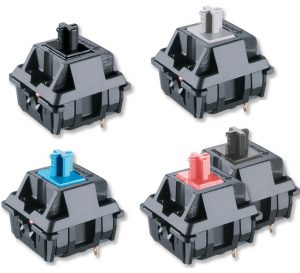Top Advantages of Integrating a Membrane Switch Into Your Electronic Tools
Top Advantages of Integrating a Membrane Switch Into Your Electronic Tools
Blog Article
How Membrane Changes Add To the Resilience of Electronic Control Panels
Membrane layer switches play an essential duty in enhancing the longevity of digital control panels, mostly through their multi-layered construction which provides reliable defense versus ecological aspects such as wetness and dust. The absence of moving parts significantly reduces the probability of mechanical failures, making membrane layer changes ideal for requiring applications.
Interpretation of Membrane Layer Switches

Membrane buttons are developed to be slim and lightweight, making them appropriate for applications where area is restricted. They can be manufactured in different shapes, dimensions, and colors, using flexibility in layout that meets visual and functional demands. Furthermore, membrane layer buttons can include different technologies, such as responsive comments and LED indicators, improving individual experience.
Because of their construction, membrane layer buttons are often resistant to dust, dampness, and general wear, contributing to their sturdiness sought after environments. Their smooth layout not only facilitates simple cleansing yet additionally reduces the threat of mechanical failing, making them a favored option for makers looking for trustworthy interface in their digital control panels.
Protection Versus Ecological Variables
The layout of membrane layer switches naturally provides a degree of security versus various ecological aspects, which is important for maintaining capability in difficult conditions - Membrane Switch. These switches are commonly created with layers of adaptable materials that shield inner parts from dampness, dirt, and impurities. By encapsulating the circuitry, membrane layer switches lessen the threat of short circuits and rust, which can dramatically hinder performance
Moreover, the use of robust adhesives and sealers throughout manufacturing improves their resistance to ecological obstacles. Membrane buttons can endure direct exposure to chemicals and solvents, making them suitable for industries such as food processing and medical care, where health and cleanliness are extremely important. Their seamless surface layout additionally prevents the accumulation of dust and microorganisms, facilitating simpler cleaning and upkeep.
Temperature fluctuations are another ecological concern, and membrane buttons are crafted to work effectively across a variety of temperature levels (Membrane Switch). This versatility ensures that control panels continue to be operational in various setups, from commercial settings to customer electronic devices
Impact on User Communication
Individual interaction with electronic control board is significantly affected by the layout and functionality of membrane layer switches. These buttons give a tactile user interface that boosts the overall customer experience, enabling instinctive navigating and control. Their responsive nature guarantees that customers receive prompt feedback upon activation, which is important for tasks calling for accuracy and efficiency.
In addition, the smooth surface of membrane layer switches helps with very easy cleansing and maintenance, advertising customer confidence in the integrity of the interface. This cleanliness is particularly important in atmospheres where hygiene is extremely important, such as clinical or food processing setups. In addition, the small and lightweight style of membrane layer switches look at here now adds to the visual charm of control board, motivating user interaction with a modern and smooth look.
In addition, the combination of aesthetic elements, such as published icons and backlighting, helps individuals quickly identify features, lowering the learning curve related to new devices. As an outcome, individuals can operate devices extra efficiently, causing increased efficiency and fulfillment. In recap, membrane layer buttons play a critical role in improving customer communication by integrating capability, looks, and ease of usage, inevitably resulting in improved operational performance.
Design Versatility and Modification
Layout adaptability and modification are vital aspects of membrane layer switches, making it Full Article possible for manufacturers to tailor digital control panels to certain applications and user demands. This versatility enables the combination of numerous layout elements, such as shades, graphics, and appearances, which can improve the aesthetic charm and individual engagement of the control board.
Membrane layer switches can be tailored in shapes and size, fitting a vast array of devices and applications, from industrial machinery to consumer electronics. This convenience guarantees that producers can develop instinctive interfaces that align with individual expectations and functional demands. In addition, the ability to integrate one-of-a-kind functions such as backlighting or responsive comments further improves functionality, allowing for an extra interactive experience.
Moreover, the production procedure for membrane switches supports the rapid prototyping of styles, enabling makers to repeat and refine their principles rapidly. This ability not just speeds up the development timeline yet additionally makes sure that the end product satisfies particular useful and aesthetic criteria.

Cost-Effectiveness and Longevity
Cost-effectiveness and long life are substantial advantages of membrane buttons, making them an appealing alternative for producers and end-users alike. These buttons are commonly cheaper to create than typical mechanical switches, mostly because of their simplified manufacturing procedures and the decreased number of elements called for. This expense benefit expands not only to initial manufacturing but likewise to long-term functional expenditures, as membrane layer buttons usually require much less maintenance and have a visite site lower failure price.
In addition, the longevity of membrane layer switches adds to their total value. Constructed from durable products, they are resistant to ecological factors such as dampness, dirt, and chemicals, which can cause premature wear in other button kinds. The lack of moving components reduces mechanical failure, permitting membrane changes to preserve functionality over prolonged periods.
This sturdiness is especially valuable in applications calling for constant efficiency under requiring problems, such as clinical gadgets and industrial equipment. Ultimately, the combination of cost-effectiveness and longevity makes membrane switches a financially practical option for manufacturers, providing reputable services that withstand the test of time while enhancing budgetary considerations.
Conclusion
In conclusion, membrane layer switches significantly improve the resilience of digital control panels via their robust building and protective functions - Membrane Switch. In general, membrane layer changes stand for a dependable and cost-effective selection for boosting the longevity and functionality of electronic control systems.
Report this page